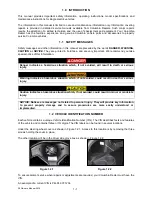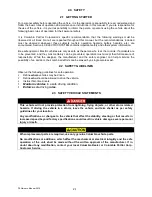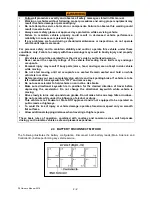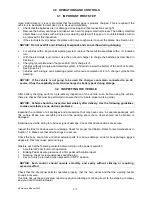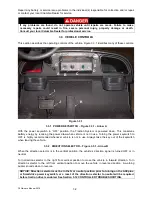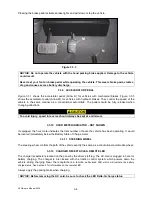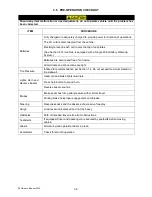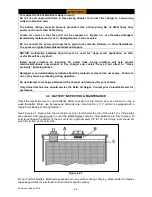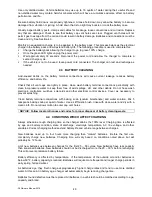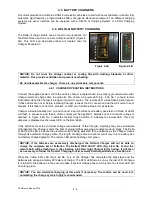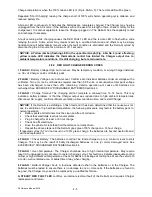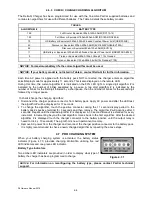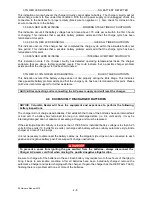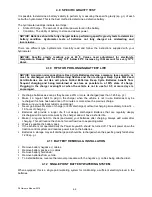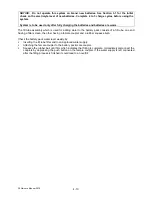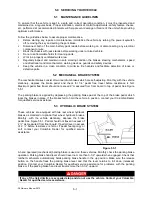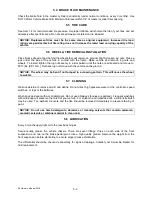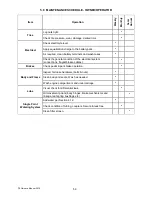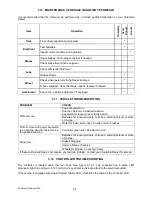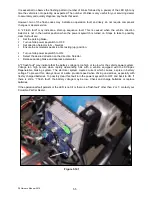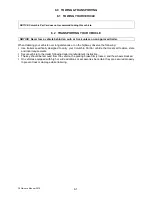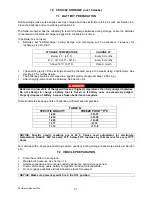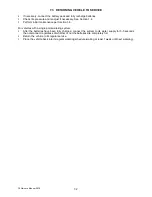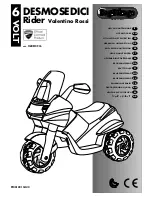
P4
Owner’s Manual 2015
Use only distilled water. Vehicle batteries may use up to 16 quarts of water during their useful life and
non-distilled water may contain harmful minerals which will have a cumulative adverse effect on battery
performance and life.
Be sure battery hold downs are properly tightened. A loose hold down may allow the battery to become
damaged from vibration or jarring. A hold down that is too tight may buckle or crack the battery case.
Weekly inspect battery posts, clamps and cables for breakage, loose connections and corrosion. Replace
any that are damaged. Check to see that battery cap vent holes are clear. Plugged vent holes will not
permit gas to escape from the cell and could result in battery damage. Batteries and connections must be
clean and dry. See Section 4.3.
Monthly an equalization charge is to be applied to the battery pack. This process balances the electrical
charge in the battery pack and will extend battery life. The following procedure is used to complete this.
Charge the battery pack allowing the charger to go to green 100% charge.
Once the green LED lights unplug the power cord.
Wait approximately 30 seconds. Reconnect the power cord and allow the charger to complete a
second charge cycle.
If the vehicle is not to be used, leave power cord connected. The charger can test and recharge as
needed.
4.3 BATTERY CLEANING
Acid-soaked debris on the battery terminal connections will cause current leakage, reduces battery
efficiency, and battery life.
Check that all vent caps are tightly in place. Hose wash battery terminal connections periodically with
clean low-pressure water to keep them free of acid spillage, dirt, and other debris. Do not hose wash
electronic controllers, switches, solenoids and other electrical control devices. Cover as necessary to
prevent splashing.
Clean battery terminal connections with baking soda (sodium bicarbonate) and water solution. Mix 5
teaspoons baking soda per quart of water. Use a stiff bristle brush, rinse with clean water and dry with a
clean cloth. Do not allow solution to enter cap vent holes.
NOTICE:
Follow local ordinances and codes for proper disposal of battery cleaning waste.
4.4 CONDITIONS WHICH AFFECT CHARGING
Always schedule enough charging time so the charger attains the 100% level. Charging time is affected
by age and battery condition, state of discharge, electrolyte temperature, AC line voltage, and other
variables. Correct charging methods extend battery life and vehicle range between charges.
New
batteries need up to four hours more charging than “mature” batteries. Before the first use,
completely charge new batteries. Charging time will vary based on conditions noted above but will
probably be 12 hours.
Limit new batteries use between charges for the first 25
– 50 cycles. New batteries have less capacity
than seasoned batteries. New batteries should not be discharged more the 20
– 30% before recharging.
This will prevent premature battery failure.
Battery efficiency is affected by temperature. If the temperature of the outside air and/or batteries is
below 60º F, battery capacity is reduced. Batteries will require more frequent and longer charge periods in
early spring, fall and winter.
As batteries age, they finish charge at progressively higher charge rates and tend to use more distilled
water. At this point in battery age, charger will automatically begin reducing charge time.
Batteries found defective must be replaced. All batteries in a vehicle should be matched according to age,
capacity and brand.
4-3


